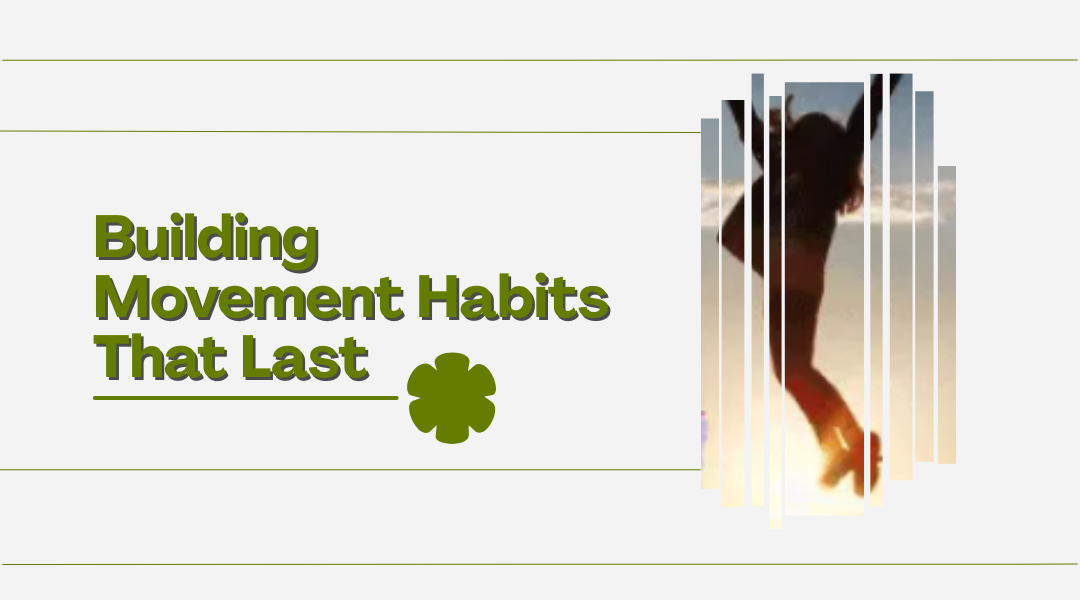For many, heading to work or running daily errands feels like a duty rather than a choice—and the same often goes for exercise. Even when the option to move more is there, it’s easy to skip it, thinking it’s optional or secondary to other responsibilities. Yet the truth is that physical activity isn’t a luxury; it’s a cornerstone of a healthy, resilient life. Neglecting regular movement can have serious long-term consequences, affecting energy, mood, mobility, and even relationships.
The good news? Developing lasting movement habits doesn’t require drastic life changes. By taking small, consistent steps and choosing activities you genuinely enjoy, anyone—teenagers, adults, or seniors—can integrate exercise seamlessly into their day-to-day routine. This guide explores the importance of daily movement, the benefits of strength training, and practical strategies to make physical activity an enjoyable, sustainable part of life.
Why Daily Movement Matters
Movement is vital for all ages, from adolescents to seniors. Regular activity strengthens the body, sharpens the mind, and improves emotional well-being.
Physical Benefits:
- Stronger muscles and bones: Activities like brisk walking, cycling, swimming, and bodyweight exercises enhance muscle tone and bone density, reducing the risk of fractures and conditions like osteoarthritis.
- Heart and circulation health: Cardiovascular activities improve blood flow, lower blood pressure, and help regulate cholesterol. A healthy heart supports long-term vitality.
- Injury prevention: Strong muscles and connective tissues act as natural shock absorbers, stabilizing joints and lowering the risk of falls or overuse injuries.
Mental and Emotional Benefits:
- Mood elevation: Exercise releases endorphins, which reduce stress, anxiety, and depression while boosting mental clarity.
- Enhanced cognitive function: Regular movement can sharpen focus, improve memory, and stimulate creativity.
- Better sleep: Active bodies tend to sleep more deeply, leading to increased energy and improved recovery.
Social Advantages:
- Joining a class, running group, or dance ensemble provides motivation and accountability. Shared goals and camaraderie make movement enjoyable and encourage consistency.
In short, daily physical activity strengthens the body, calms the mind, and creates opportunities for connection—all essential elements of a thriving, balanced life.
Strength Training: The Foundation of Functional Fitness
While cardio is essential, strength training plays a critical role in overall health. As we age, muscle mass naturally declines—a process called sarcopenia—slowing metabolism, reducing mobility, and increasing the risk of falls. Regular strength training combats this decline, supporting muscle growth, bone density, and metabolic health.
Benefits of Strength Training:
- Muscle and metabolism: Strong muscles help maintain energy levels and prevent unwanted weight gain.
- Bone health: Weight-bearing exercises like squats, lunges, and resistance band workouts stimulate bone formation, reducing osteoporosis risk.
- Injury prevention and balance: Strengthening muscles around joints protects them from stress, while exercises targeting coordination improve balance—especially important for older adults.
- Blood sugar regulation: Muscle activity helps maintain healthy glucose levels, lowering the risk of type 2 diabetes.
Accessible Options for Everyone:
- Bodyweight exercises: Push-ups, squats, lunges, planks—no equipment needed, adaptable for all levels.
- Resistance bands: Affordable, versatile, and portable, bands allow gradual increases in resistance and target specific muscles.
- Weightlifting: Free weights or machines provide scalable challenges for those comfortable with gyms.
Starting with simple, achievable exercises and gradually increasing intensity ensures safety, builds confidence, and fosters long-term adherence.
Getting Started With Strength Training
For beginners, gyms can feel intimidating. Here’s a roadmap to ease into strength training:
- Ask for guidance: Gym staff can demonstrate correct techniques and help you navigate equipment.
- Consider a trainer: A short-term investment in a personal trainer can establish proper form, prevent injury, and provide a structured routine.
- Create enjoyable workouts: Choose activities you genuinely like—dance classes, cycling, yoga, or even martial arts. Enjoyment ensures consistency.
- Refresh routines: Every 6–8 weeks, update exercises to challenge your muscles in new ways and prevent boredom.
- Progress gradually: Increase weights or resistance slowly, allowing your body to adapt safely.
Designing a Movement Routine That Sticks
Consistency is more important than intensity. Treat exercise like a non-negotiable appointment—just as you do with work or school.
Tips for Habit Formation:
- Schedule it: Set a specific time each day, even if it’s just 10–15 minutes initially. Gradually extend session length.
- Start small: Focus on manageable steps; small wins build momentum.
- Choose activities you enjoy: Dance, hiking, cycling, swimming, or team sports—fun activities are easier to sustain.
- Mix it up: Combine cardio, strength, and flexibility exercises for balanced fitness and to prevent monotony.
- Consider timing: Exercise during your peak energy hours—morning, afternoon, or evening—while avoiding intense workouts close to bedtime.
- Track progress: Set clear, measurable goals, like lifting a certain weight, running a specific distance, or mastering a yoga pose.
Bringing It All Together
Cultivating a movement habit is not about punishing yourself at the gym—it’s about enhancing your life. Regular physical activity:
- Strengthens muscles and bones
- Boosts heart health
- Elevates mood and mental clarity
- Improves sleep quality
- Fosters social connections
- Supports longevity and independence
Start small, find what you love, and treat exercise as a vital part of your daily routine. Integrate strength, flexibility, and cardiovascular activities at your own pace. Over time, movement will feel as natural and essential as brushing your teeth or heading to work—an investment in your health, happiness, and overall quality of life.
Key Takeaways:
- Prioritize health over weight loss.
- Commit to consistent timing each day.
- Begin with enjoyable, manageable exercises.
- Gradually expand your routine to include strength, cardio, and flexibility.
- Embrace community and shared activities to boost motivation.
By treating movement as an indispensable part of your life, you cultivate habits that support long-term vitality, resilience, and happiness.
